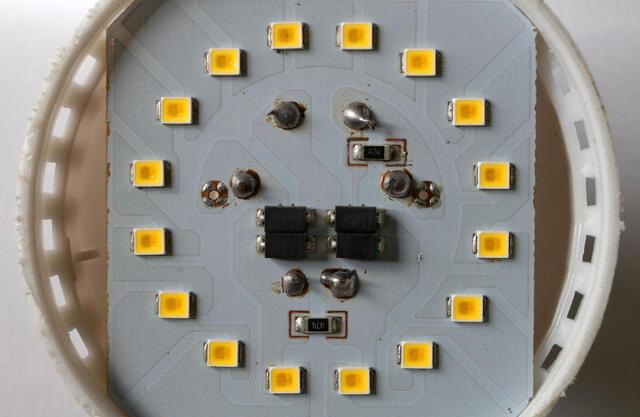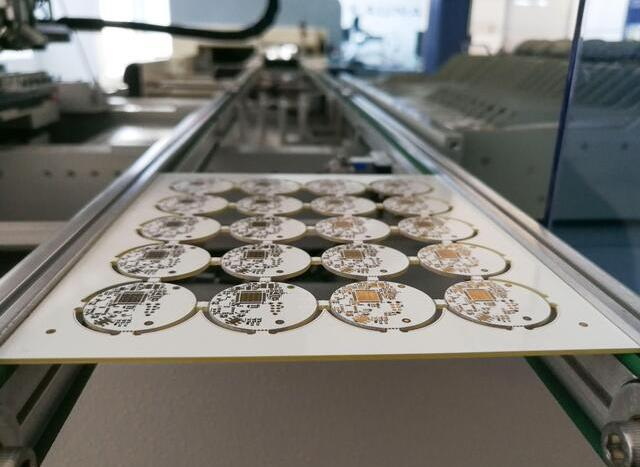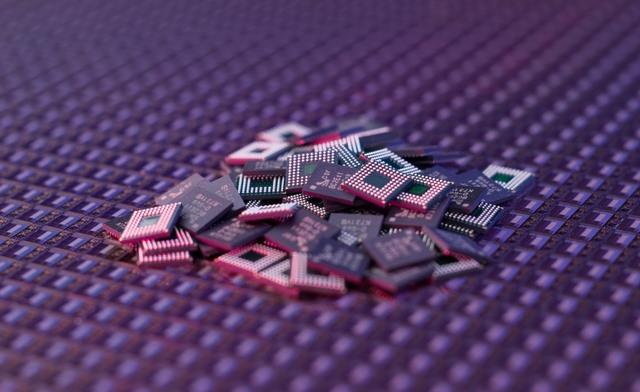Content Menu
● Introduction to SMT and THT
>> Surface Mount Technology (SMT)
>> Through-Hole Technology (THT)
● Applications of SMT
● Applications of THT
● Comparison of SMT and THT
● Mixed Technology Assembly
● Challenges and Future Trends
>> Challenges in SMT Assembly
>> Future Trends
● Design Considerations for SMT and THT
● Expanded Applications of SMT and THT
>> SMT in IoT and Smart Home Devices
>> THT in Power Supplies and Industrial Equipment
● Future Developments in SMT and THT
>> Sustainability in PCB Assembly
>> Advancements in Component Design
● Conclusion
● Frequently Asked Questions
>> 1. What are the primary advantages of SMT over THT?
>> 2. In which applications is THT preferred over SMT?
>> 3. How does mixed technology assembly benefit PCB design?
>> 4. What are the challenges in implementing SMT in PCB design?
>> 5. How is SMT technology evolving to meet future electronic design needs?
In the realm of electronics manufacturing, two dominant technologies have shaped the way printed circuit boards (PCBs) are assembled: Surface Mount Technology (SMT) and Through-Hole Technology (THT). Both methods have their unique advantages and are used in various applications across different industries. This article delves into the common applications of SMT and THT, highlighting their strengths and weaknesses, and explores how they complement each other in modern electronics production.

Introduction to SMT and THT
Surface Mount Technology (SMT)
SMT involves mounting components directly onto the surface of a PCB. This method is widely used for its ability to support high-density assembly, miniaturization, and automation, making it ideal for high-volume production. SMT components are generally smaller and lighter, allowing for more components to be placed on a smaller PCB, which reduces material costs and enhances design flexibility. The automation in SMT assembly lines delivers speed and precision, significantly curtailing production time and costs.
Through-Hole Technology (THT)
THT, on the other hand, involves inserting component leads into drilled holes in the PCB and soldering them on the other side. This method is preferred for applications requiring robust mechanical connections, high reliability, and durability under harsh conditions. THT components are typically larger and more suitable for high-stress mechanical applications, high power, and high-temperature environments. Despite being more labor-intensive and costly than SMT, THT remains essential in industries where reliability and mechanical strength are paramount.
Applications of SMT
SMT is widely adopted across various sectors due to its efficiency and compactness:
- Consumer Electronics: SMT is crucial in smartphones, laptops, and wearable devices, enabling the creation of smaller, more efficient products. For instance, smartphones utilize microprocessors, NAND memories, and RF integrated circuits, all of which are efficiently assembled using SMT.
- Automotive Industry: SMT is used in engine control units (ECUs), advanced driver assistance systems (ADAS), and infotainment systems for its reliability and performance.
- Medical Devices: SMT facilitates the production of compact and reliable medical devices, including diagnostic equipment and implantable devices.
- Telecommunications: SMT is used in network routers, switches, and modems due to its ability to support high-density assembly.
Applications of THT
THT remains vital in applications where mechanical strength and reliability are critical:
- Aerospace and Military: THT is preferred for its ability to withstand extreme environmental conditions, such as high temperatures and vibrations.
- Industrial Machinery: Used in industrial automation and control devices, such as PLCs and power supplies, where durability is essential.
- Power Electronics: THT is suitable for components that require robust mechanical bonding to handle high currents and voltages.
- Prototyping: THT is often used in prototyping due to its ease of manual assembly and component replacement.
Comparison of SMT and THT
| Feature | SMT | THT |
| Component Size | Smaller and lighter | Larger |
| Assembly Process | Automated, faster | Manual or automated, slower |
| Cost | Generally lower for high-volume production | Higher due to manual labor and material costs |
| Mechanical Strength | Good vibration resistance but susceptible to physical stress | Stronger mechanical bonds, more durable under stress |
| Design Flexibility | Higher density, more flexible designs | Limited by drilled holes, less flexible |
Mixed Technology Assembly
In many cases, both SMT and THT are used together in a single PCB to leverage their respective strengths. This mixed-technology assembly allows for the combination of high-density SMT components with the robustness of THT components, optimizing the design for specific application requirements. For example, while SMT handles the bulk of electronic components due to its efficiency in space-saving designs, THT may be utilized for larger parts like connectors or heat sinks that necessitate stronger mechanical support.

Challenges and Future Trends
While SMT continues to dominate high-volume production due to its efficiency and cost-effectiveness, advancements in component design and materials are improving the durability of SMT components. However, THT remains indispensable in niche applications where reliability and mechanical strength are paramount. As electronics manufacturing evolves, the integration of both technologies will continue to play a crucial role in meeting diverse industry needs.
Challenges in SMT Assembly
SMT assembly, despite its advantages, presents several challenges:
- High Initial Investment Costs: Transitioning to SMT requires significant upfront investment in specialized equipment like pick-and-place machines and reflow ovens.
- Challenges with Fine Pitch Components: Assembling fine-pitch components requires advanced skills and precise equipment, increasing the complexity of the assembly process.
- Difficult Rework and Modifications: Reworking SMT components can be complex due to their compact size and leadless nature.
Future Trends
As the industry advances, future trends indicate a greater integration of automation in both THT and SMT manufacturing processes. This will further enhance accuracy and reduce production time. Additionally, advancements in materials technology are likely to support the development of smaller, more compact components that can benefit from surface mounting, paving the way for ultra-thin electronic devices. The emerging focus on sustainability is also expected to influence production methods, leading to greener practices in PCB assembly.
Design Considerations for SMT and THT
When designing PCBs for either SMT or THT, several factors must be considered:
- Component Selection: Choosing components that are suitable for the selected assembly method is crucial. SMT components are ideal for high-density designs, while THT components are better suited for applications requiring mechanical strength.
- PCB Layout: The layout of the PCB should be optimized for the chosen assembly method. SMT designs require precise component placement to ensure efficient assembly, while THT designs must accommodate drilled holes.
- Manufacturability: Designs should be optimized for manufacturability, considering factors such as standard sizes and shapes, alignment and spacing, and testability to ease production and reduce costs.
Expanded Applications of SMT and THT
SMT in IoT and Smart Home Devices
SMT plays a crucial role in the development of Internet of Things (IoT) devices and smart home systems. These devices, such as thermostats and lighting systems, utilize Wi-Fi modules, microcontrollers, and temperature sensors, all of which are efficiently assembled using SMT. The compact size of these components allows them to be installed in various locations, providing a wide range of IoT applications.
THT in Power Supplies and Industrial Equipment
THT is primarily used for components that require robust connections, making it suitable for applications like power supplies and industrial equipment. This technology ensures strong mechanical bonds, which are essential for handling high currents and voltages in power electronics.
Future Developments in SMT and THT
As technology advances, both SMT and THT are adapting to new demands and innovations. The increasing complexity of electronic circuits is driving the need for more efficient techniques in PCB assembly. Future trends indicate a greater integration of automation in the manufacturing processes of both THT and SMT, further enhancing accuracy and reducing production time.
Sustainability in PCB Assembly
The emerging focus on sustainability is also expected to influence production methods, leading to greener practices in PCB assembly. This includes the use of environmentally friendly materials and processes that minimize waste and reduce energy consumption.
Advancements in Component Design
Advancements in materials technology are likely to support the development of smaller, more compact components that can benefit from surface mounting. This will pave the way for ultra-thin electronic devices, further enhancing the miniaturization capabilities of SMT.
Conclusion
In conclusion, both SMT and THT have distinct applications based on their strengths. SMT is ideal for high-density, high-volume production with its automation capabilities, while THT excels in applications requiring robust mechanical connections and durability. The choice between these technologies depends on the specific requirements of the electronic device being manufactured.

Frequently Asked Questions
1. What are the primary advantages of SMT over THT?
SMT offers advantages such as high-density assembly, automation, and lower costs for high-volume production. It also enables more compact designs and faster assembly times compared to THT.
2. In which applications is THT preferred over SMT?
THT is preferred in applications requiring high mechanical strength and reliability, such as aerospace, military, and industrial equipment, where components must withstand harsh conditions.
3. How does mixed technology assembly benefit PCB design?
Mixed technology assembly allows designers to combine the strengths of both SMT and THT, enabling high-density designs with robust mechanical connections, which is particularly useful in complex systems requiring both miniaturization and reliability.
4. What are the challenges in implementing SMT in PCB design?
SMT requires advanced design and production skills, and reworking SMT components can be challenging due to their small size and dense placement on PCBs.
5. How is SMT technology evolving to meet future electronic design needs?
SMT technology is evolving with advancements in component design and materials, improving durability and performance. Additionally, advancements in automation and manufacturing processes continue to enhance efficiency and reduce costs.




















